What are the roots that clutch, what branches grow
Out of this stony rubbish? Son of man,
You cannot say, or guess, for you know only
A heap of broken images, where the sun beats,
And the dead tree gives no shelter, the cricket no relief,
And the dry stone no sound of water. Only
There is shadow under this red rock,
(Come in under the shadow of this red rock),
And I will show you something different from either
Your shadow at morning striding behind you
Or your shadow at evening rising to meet you;
I will show you fear in a handful of dust.
Paranoia stalks a barren land and there is no place to hide. A bleak and unforgiving wasteland. Everything is broken. We are at the mercy of our own stalking shadow with no hope of relief or escape.
And to convey this nightmare Eliot presents a disjointed poem of broken images. No neat tidy metrical verses but rather a tightly constructed assemblage of disorder- references to this, and allusions to that – snatches of ancient civilizations, religion, mythology, poetic form and social structure history, past grandeur. All gone. All fractured. What is left is the no-man’s land of the modernist and post-war world.
The Great War had given the world an actual wasteland of devastation, horror, apprehension, death, and decay.
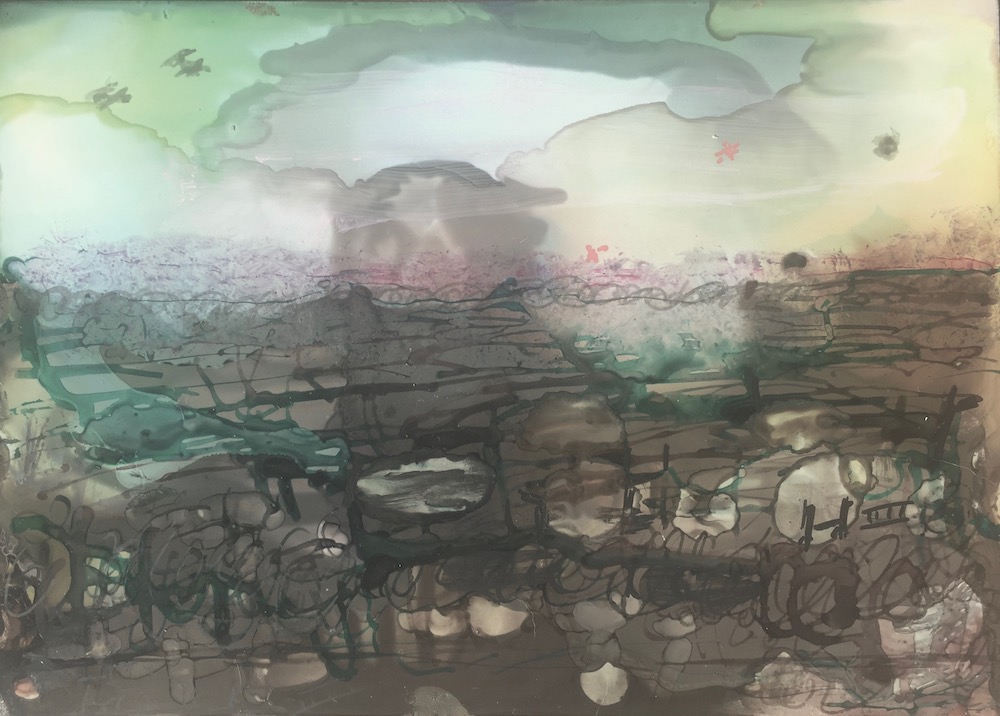
No Man’s Land, said poet Wilfred Owen, was “like the face of the moon, chaotic, crater-ridden, uninhabitable, awful, the abode of madness.”
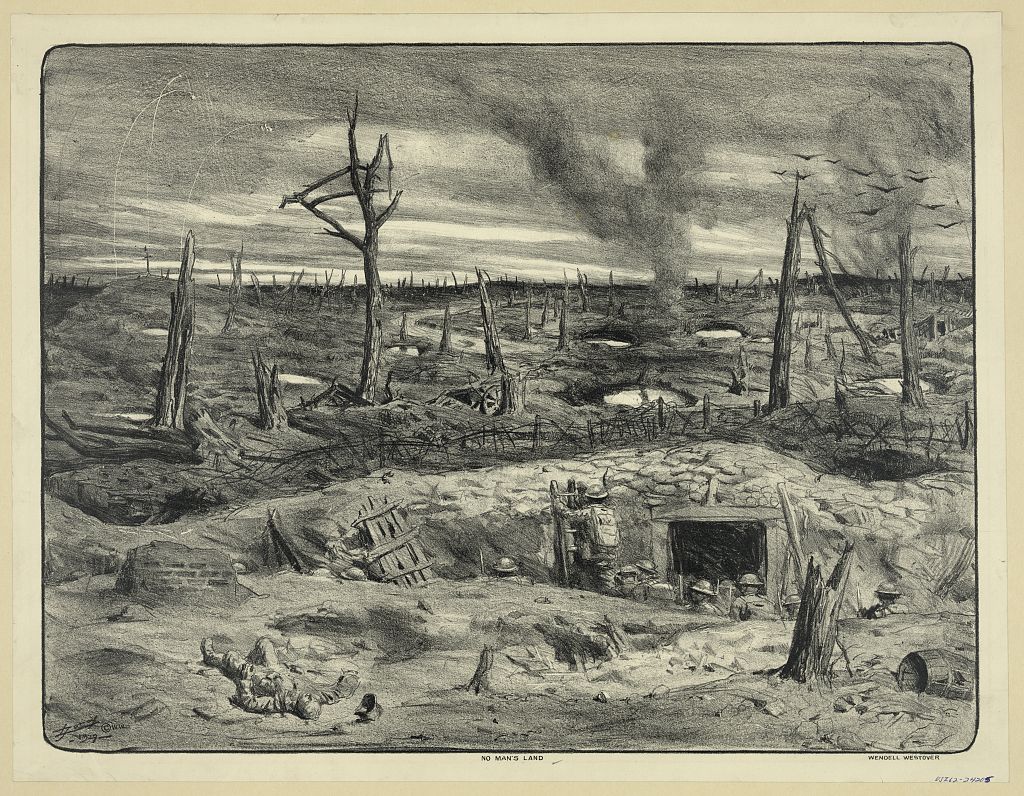
In a letter to his mother dated January 19, 1917, Owen described the zone that had just been devastated by the four-month Battle of the Somme:
It is like the eternal place of gnashing of teeth; the Slough of Despond could be contained in one of its crater-holes; the fires of Sodom and Gomorrah could not light a candle to it–to find the way to Babylon the Fallen.
It is pock-marked like a body of foulest disease and its odour is the breath of cancer. . .
No Man‘s Land under snow is like the face of the moon chaotic, crater-ridden, uninhabitable, awful, the abode of madness.
Eliot’s 1922 poem creates the metaphorical wasteland of cultural disorientation and decline. He peoples it with fragmented voices and a multiplicity of points of view that reflect the splintered post-war modernist world as Eliot experienced it.
They Chose Collage
Gertrude Stein also read the zeitgeist; an age of mechanical marvels – of rapid technological change – the flying machine, automobile, the telephone, electric motor, and X-rays. Her Tender Buttons 1914 also breaks with traditional form. But Stein was writing before the war. Her focus is not the collapse of the cultural order. Her objects and broken images are domestic and quotidian. Her representation of the changed reality is reflected in the grammar she chose. Just as Picasso and the Cubists were fracturing the image, Stein was breaking the structure of language not with shards but looping riffs.
In both Tender Buttons and The Waste Land, the poets reject the form and formality of the past as inadequate to represent their disjointed world. In order to show the complexity and contradictions of the world, they chose collage. New wine in new bottles. Eliot ultimately adheres to poetic form to convey his meaning. Stein seems to distrust that words can any longer convey anything specific and stable.
Gertrude Stein Meets Thomas Gradgrind
Thomas Gradgrind is the literal-minded teacher in Dickens’ Hard Times and determinedly into the importance of facts.I magine Gertrude Stein in Thomas Gradgrind’s class:
“Stein – define shawl,” he barked.
“A shawl.
A shawl is a hat and hurt and a red balloon and an under coat and a sizer a sizer of talks. A shawl is a wedding, a piece of wax a little build. A shawl.”
Take that Mr. Gradgrind!

“These fragments I have shored against my ruins”
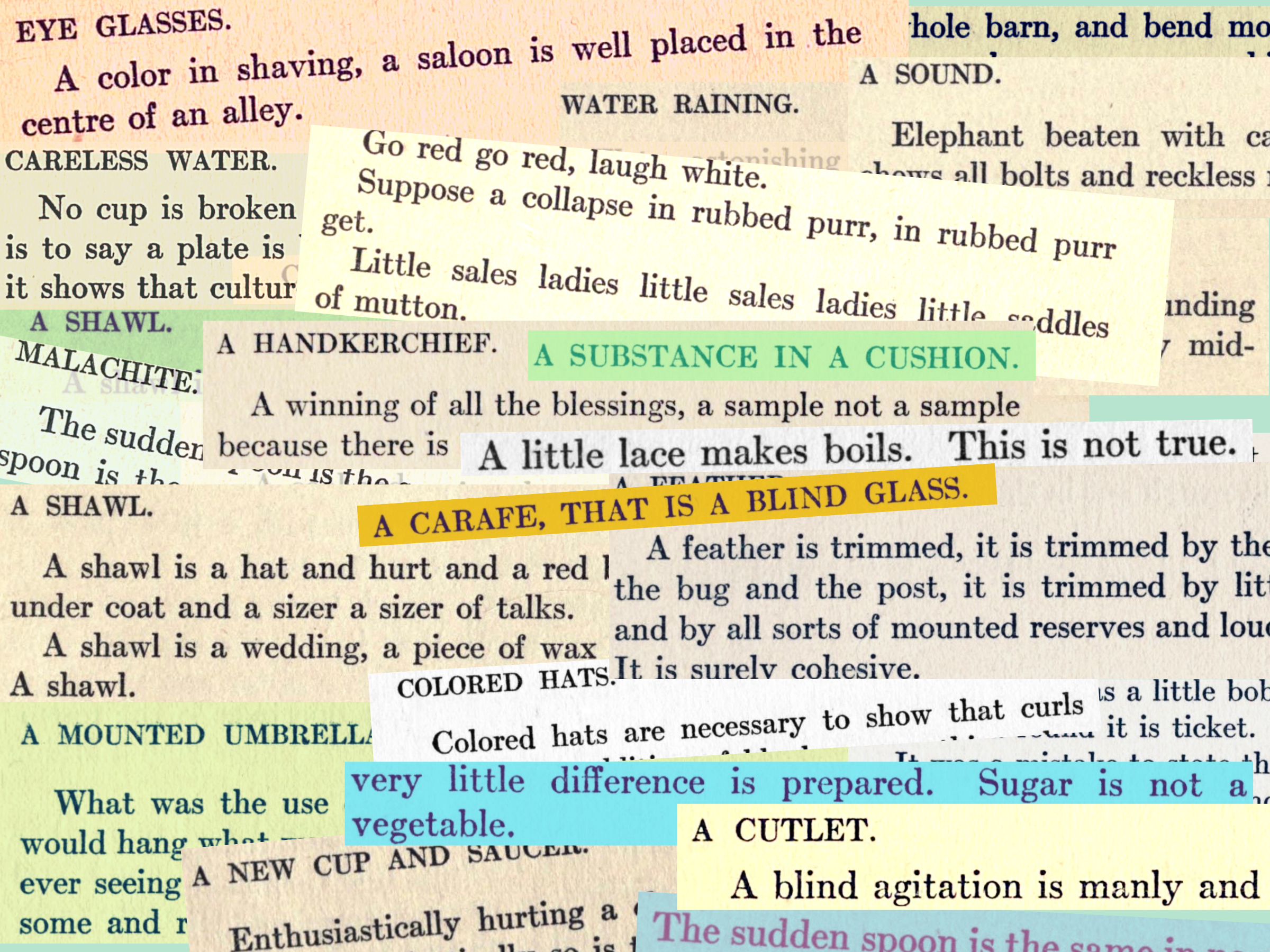
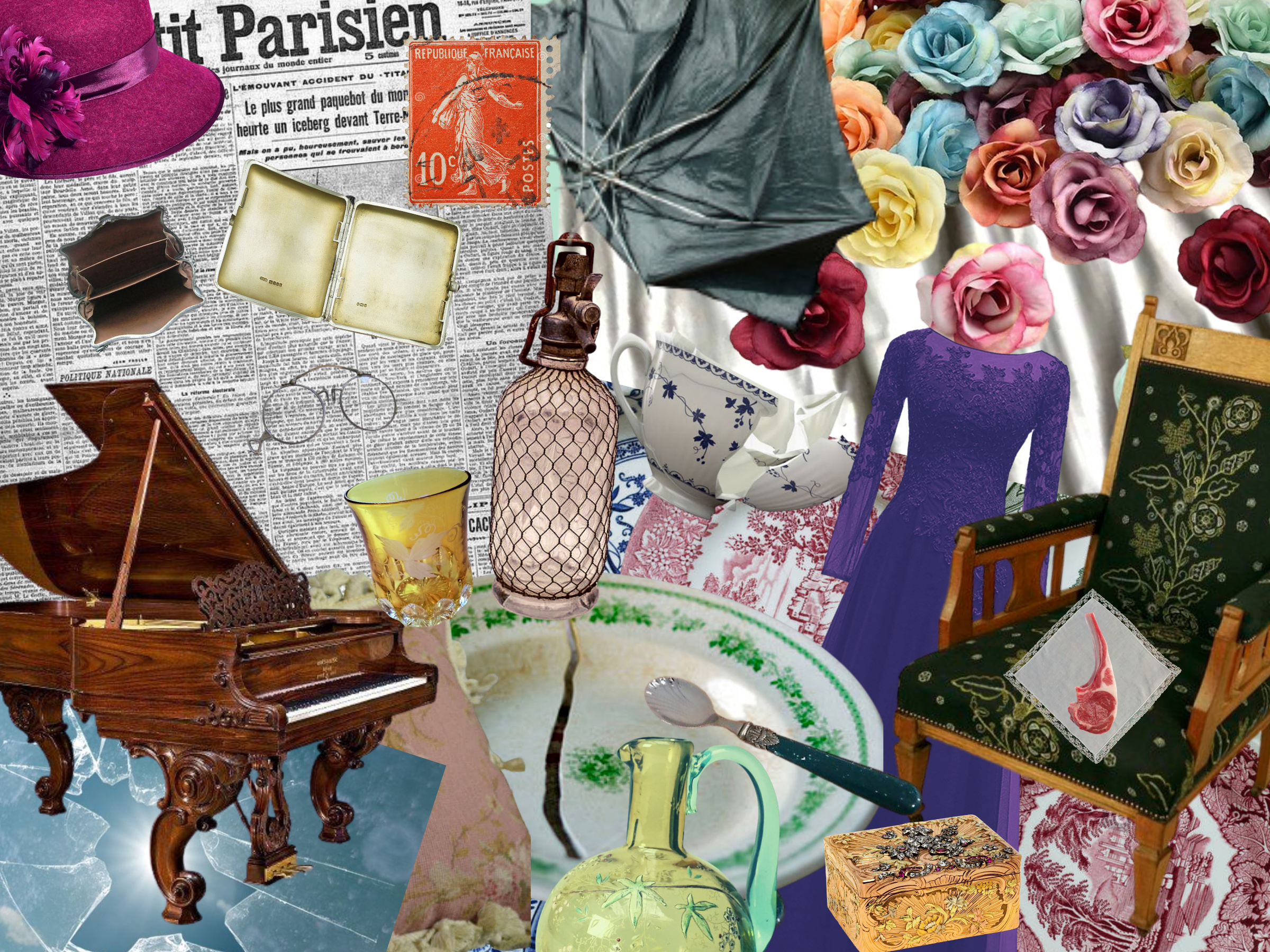
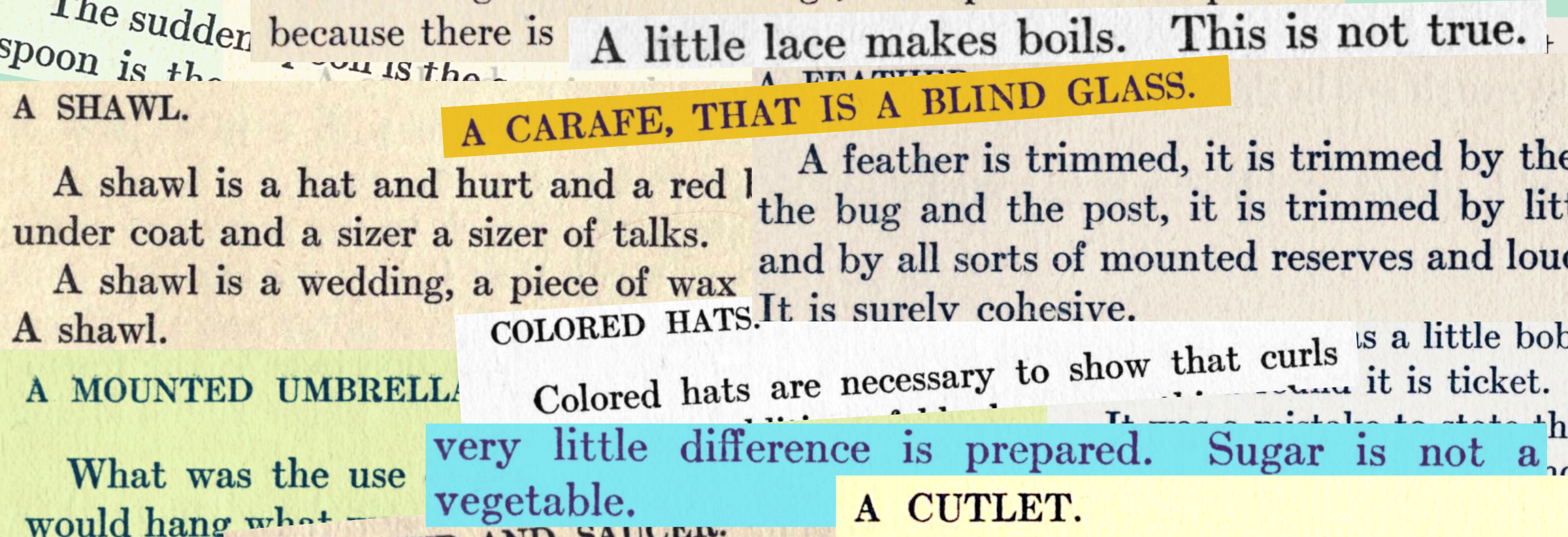


Religion is a complex and multifaceted aspect of human culture and society. It typically involves beliefs and practices related to the existence, nature, and purpose of the universe and its creator or creators, often involving a higher power or supernatural force. Religion often encompasses moral codes, ethical guidelines, and rituals that are intended to guide human behavior and provide a framework for understanding the world.
Eliot always resonates with me. When we Gerts were young we had recordings of him reciting his work. How well I remember that sepulchral voice intoning, ‘Dark, dark, dark, they all go into the dark…’
Says it all.
He must have seemed like an extra at a funeral on a rainy day in winter. Especially in green face powder. All that raiding the inarticulate and echoing in the mind. Just found this:
http://www.openculture.com/2013/06/listen_to_ts_eliot_recite_his_late_masterpiece_the_ifour_quartetsi.html
Marvelous stuff nonetheless.
That’s the one.
Is the world in more fragmented or has it always been and we never noticed, were never “on the front line:?
Do you remember that BBC Art series with Robert Hughes called “The Shock of the New”?
My grandfather died well before I was born, but he served as an ambulance driver in France in the Canadian Expeditionary Forces during that dreadful war. I suspect it contributed to his early death.
My maternal grandfather never came home from that war, although he did not die in combat. His death left a hole in the family that lasted for generations.
Btw Gertrude Stein and Alice B. drove an ambulance in France in WW1.
What do you know about your grandfather’s service?
Alas and alack! These COVID times makes meeting difficult and trans-Atlantic travel out of the question. Thanks for the kind words. And how about you post your collages and I’ll post mine! And I take my tea strong but not too strong, no sugar and not too much milk! I’ll bring the choccy bics. Thanks.
Mine’s one sugar, no milk! Coincidental, but I’ve just eaten a couple of chocolate ‘malted milk’ biscuits with my cup of tea! I’m now working on a collage, with chocolate!
Ashley´s last blog post ..A Garden Full of Butterflies
Josie, this is ‘one hell of a post’ and thanks to you I will be ‘collaging’ all afternoon. I would love to have that cup of tea with you! Where can we meet? 😉
Ashley´s last blog post ..A Garden Full of Butterflies